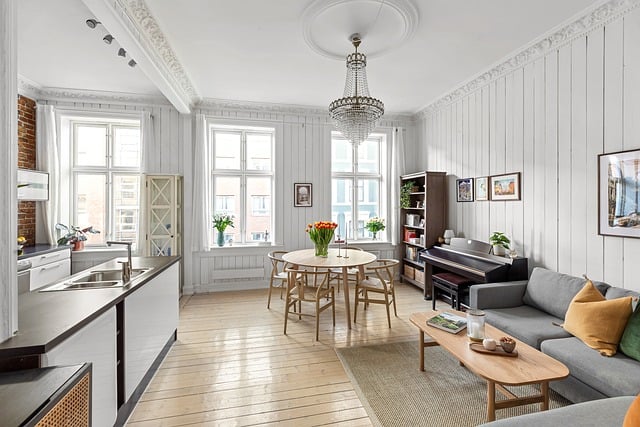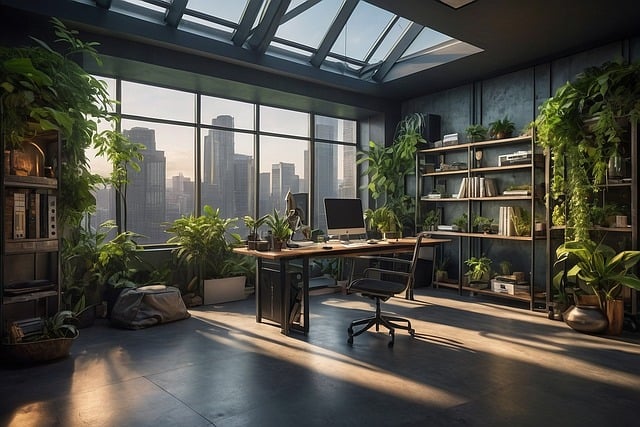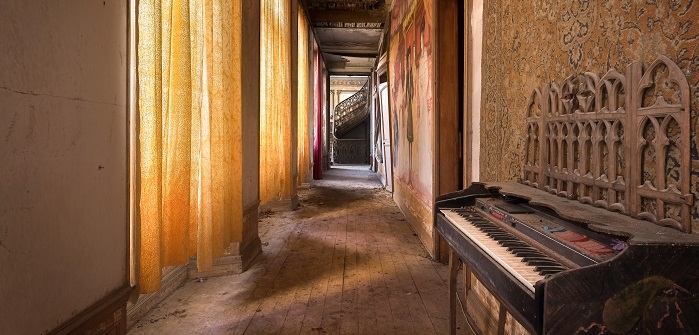As the world becomes increasingly aware of environmental issues, sustainability has become a significant consideration in many aspects of life, including home decor. Sustainable home decor trends are expected to gain even more traction as consumers seek ways to reduce their environmental impact while creating stylish and comfortable living spaces. This article explores the top sustainable home decor trends, offering insights into how you can incorporate eco-friendly elements into your home.
The concept of sustainable living extends beyond energy-efficient appliances and eco-friendly building materials. It encompasses every aspect of our daily lives, including how we decorate our homes. Sustainable home decor is about making mindful choices that contribute to environmental preservation, support local economies, and promote a healthier lifestyle. Several key trends are emerging in the realm of sustainable home decor.
1. Eco-friendly Materials
Recycled and Upcycled Materials
One of the most significant trends in sustainable home decor is using recycled and upcycled materials. Furniture and decor items made from recycled plastic, metal, and wood are becoming increasingly popular. These materials not only reduce waste but also offer unique aesthetic qualities. For example, a coffee table made from reclaimed wood can add character and history to a room, while recycled metal accents provide a modern, industrial touch.
Natural Fibers
Natural fibers like bamboo, hemp, jute, and organic cotton are gaining popularity for their sustainability and versatility. Bamboo, in particular, is celebrated for its rapid growth and minimal environmental impact. Hemp and jute are also favored for their durability and natural texture, which add a rustic charm to any decor. Organic cotton, grown without harmful pesticides and chemicals, is an excellent choice for bedding, curtains, and upholstery.
Sustainable Wood
When it comes to wooden furniture, sustainability is key. Certified sustainable wood sources, such as those approved by the Forest Stewardship Council (FSC), ensure that the wood is harvested responsibly. Reclaimed timber, sourced from old buildings, barns, and boats, also offers a sustainable alternative that adds a touch of history and uniqueness to home decor.
2. Energy-efficient Lighting
LED Lighting
Lighting is a crucial element of home decor, and energy-efficient options are at the forefront of sustainable trends. LED lights are far more efficient than traditional incandescent bulbs, using up to 80% less energy and lasting significantly longer. They are available in various styles and colors, making them suitable for any decor.
Smart Lighting Systems
Intelligent lighting systems are another trend gaining momentum. These systems allow homeowners to control their lighting remotely, schedule lights to turn on and off, and even adjust the brightness and color to suit their mood or activity. By optimizing energy use, intelligent lighting systems can significantly reduce electricity consumption.
Solar-powered Lighting
Solar-powered lighting is an excellent option for outdoor spaces. Solar lights harness the sun’s energy during the day and illuminate gardens, patios, and pathways at night without relying on the grid. They are easy to install, cost-effective, and reduce the carbon footprint of home lighting.
3. Multifunctional Furniture
Space-saving Designs
Multifunctional furniture is becoming increasingly important with the growing trend of smaller living spaces. Furniture that serves multiple purposes, such as sofa beds, storage ottomans, and extendable dining tables, helps maximize space and reduce the need for additional pieces. This saves resources and creates a more streamlined and clutter-free environment.
Modular Furniture
Modular furniture offers flexibility and adaptability, making it a popular choice for sustainable home decor. Pieces can be rearranged, added, or removed to suit changing needs and preferences. This adaptability reduces the need to purchase new furniture frequently, minimizing waste.
Durability and Longevity
Investing in high-quality, durable furniture is a key aspect of sustainable home decor. Well-made pieces that stand the test of time reduce the need for replacements, ultimately saving resources and reducing waste. Look for furniture with sturdy construction and timeless design that can adapt to evolving styles and needs.
4. Indoor Greenery
Biophilic Design
Biophilic design, which emphasizes the connection between humans and nature, is a growing trend in sustainable home decor. Incorporating natural elements into interior spaces can enhance well-being and reduce stress. This can be achieved through natural materials, organic shapes, and, most notably, indoor plants.
Vertical Gardens
Vertical gardens are an innovative way to bring greenery into the home without taking up valuable floor space. These living walls can be installed indoors or outdoors and provide numerous benefits, including improved air quality, natural insulation, and a visually stunning focal point.
Air-purifying Plants
Certain plants are particularly effective at improving indoor air quality by filtering out toxins and releasing oxygen. Popular air-purifying plants include spider plants, peace lilies, and snake plants. Incorporating these plants into your home decor enhances aesthetics and promotes a healthier living environment.
5. Sustainable Textiles
Organic and Natural Fabrics
Sustainable textiles are an essential component of eco-friendly home decor. Organic fabrics, such as organic cotton, linen, and wool, are produced without harmful chemicals, making them safer for both the environment and the people who use them. These materials are ideal for upholstery, bedding, and curtains.
Recycled Textiles
Textiles made from recycled materials are another sustainable option. For example, recycled polyester from plastic bottles can be used for rugs, curtains, and upholstery. These textiles help reduce waste and promote a circular economy.
Eco-friendly Dyeing Techniques
Due to toxic chemicals and excessive water consumption, traditional dyeing processes can harm the environment. Eco-friendly dyeing techniques, such as natural dyes and low-impact dyeing processes, offer a sustainable alternative. These methods use fewer resources and produce less pollution, making them a better choice for sustainable home decor.
6. Water Conservation Features
Low-flow Fixtures
Water conservation is a crucial aspect of sustainable living. Low-flow fixtures, such as faucets, showerheads, and toilets, reduce water usage without compromising performance. Modern designs offer sleek aesthetics and advanced functionality, making them a stylish and eco-friendly addition to any home.
Greywater Systems
Greywater systems recycle water from sinks, showers, and washing machines for irrigation and other non-potable applications. They can significantly reduce water consumption and promote a more sustainable lifestyle.
Smart Irrigation
Intelligent irrigation systems use technology to optimize water use for gardens and landscapes. These systems can adjust watering schedules based on weather conditions, soil moisture levels, and plant needs, ensuring water is used efficiently and effectively.
7. Low VOC Paints and Finishes
Non-toxic Paints
Many conventional paints contain volatile organic compounds (VOCs), which can release harmful chemicals into the air. Low- and zero-VOC paints are healthier alternatives, offering the same vibrant colors and durability without the associated health risks. These paints are an excellent choice for a sustainable and non-toxic home environment.
Natural Finishes
Natural finishes, such as oils and waxes, protect and enhance the beauty of wood and other materials. These finishes are made from natural ingredients and do not contain harmful chemicals, making them a safer and more sustainable option for home decor.
8. Ethical and Local Sourcing
Supporting Local Artisans
Supporting local artisans and businesses is an essential aspect of sustainable home decor. Locally made products reduce the carbon footprint associated with transportation and help support the local economy. Additionally, locally crafted items often have a unique, handcrafted quality that adds character and charm to home decor.
Fair Trade Products
Fairtrade products ensure that the people who make them are paid fairly and work in safe conditions. Choosing fair trade decor items can support ethical practices and contribute to a more equitable global economy. Look for fair trade certifications when purchasing rugs, textiles, and decorative accessories.
9. Minimalist Aesthetic
Decluttered Spaces
A minimalist aesthetic emphasizes simplicity, functionality, and the elimination of excess. Decluttering your space and choosing only the essential pieces can create a clean and serene environment. This approach reduces waste and promotes a more mindful and intentional way of living.
Timeless Design
The timeless design focuses on stylish yet enduring pieces. Rather than follow fleeting trends, invest in classic, well-made items that will remain in style for years. This reduces the need for frequent replacements and contributes to a more sustainable approach to home decor.
Neutral Palettes
Neutral and earthy tones are a hallmark of minimalist design. These colors create a calming and cohesive environment that is easy to maintain and adapt. Additionally, neutral palettes allow for flexibility in decor, as they can be easily updated with new accessories and accents.
Conclusion
Sustainable home decor is more than just a trend; it is a lifestyle choice that reflects a commitment to environmental stewardship, ethical practices, and a healthier way of living. You can create a beautiful and sustainable home by incorporating eco-friendly materials, energy-efficient lighting, multifunctional furniture, indoor greenery, sustainable textiles, water conservation features, low VOC paints, ethical sourcing, and a minimalist aesthetic.
These trends will continue to shape the way we decorate our homes, offering innovative, stylish, and sustainable solutions. Embracing these trends enhances the beauty and functionality of your living space and contributes to a greener and more sustainable future for all.



